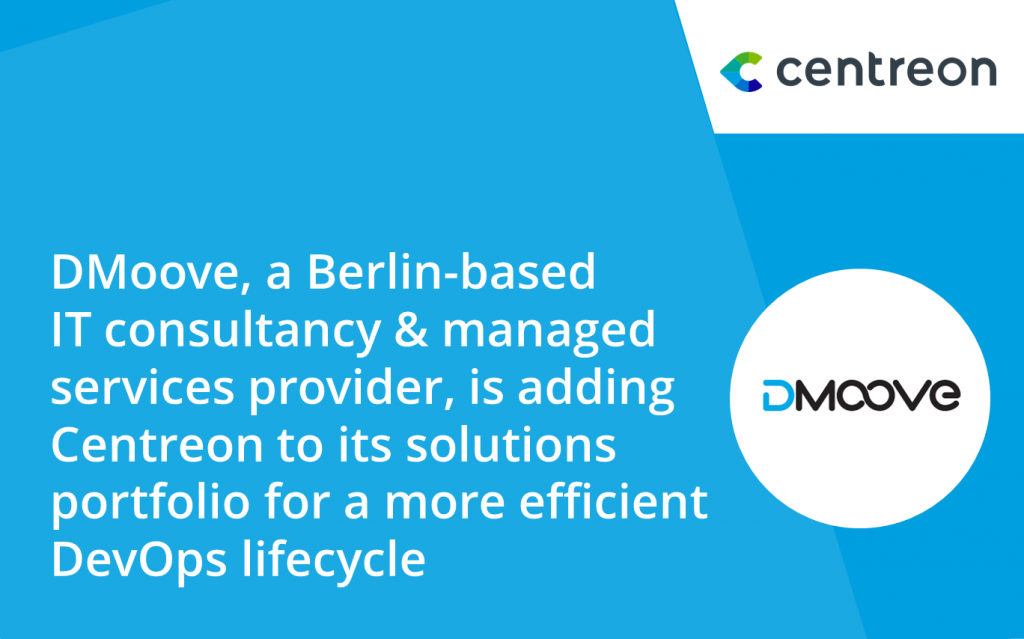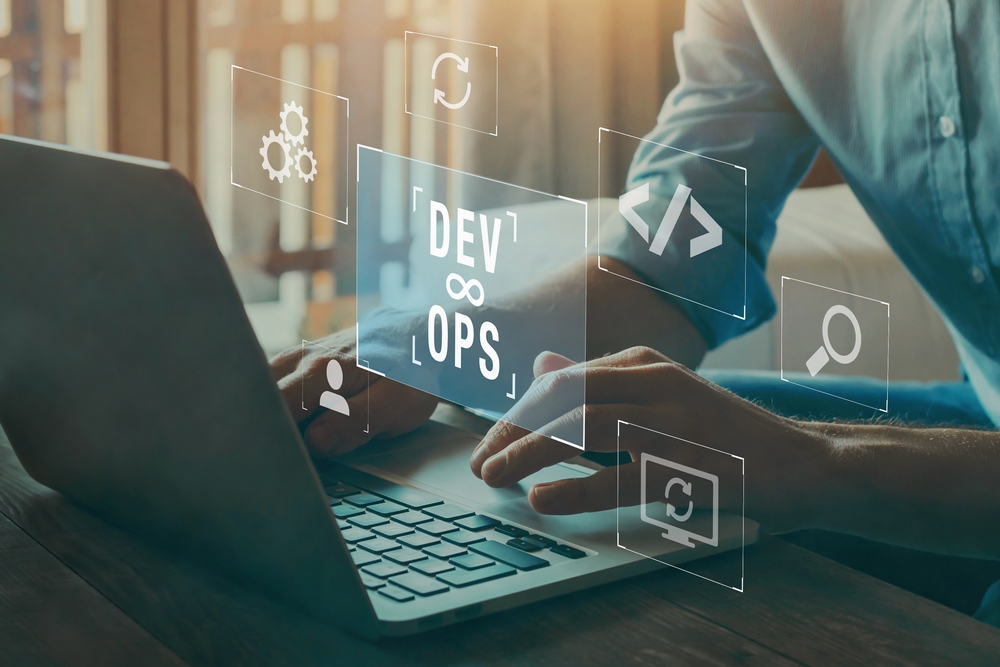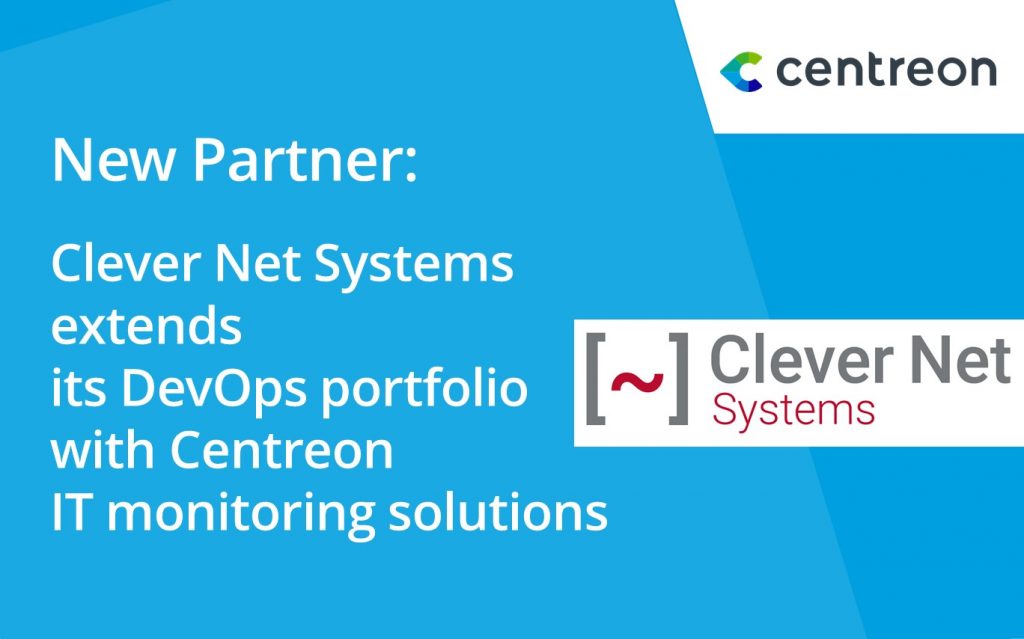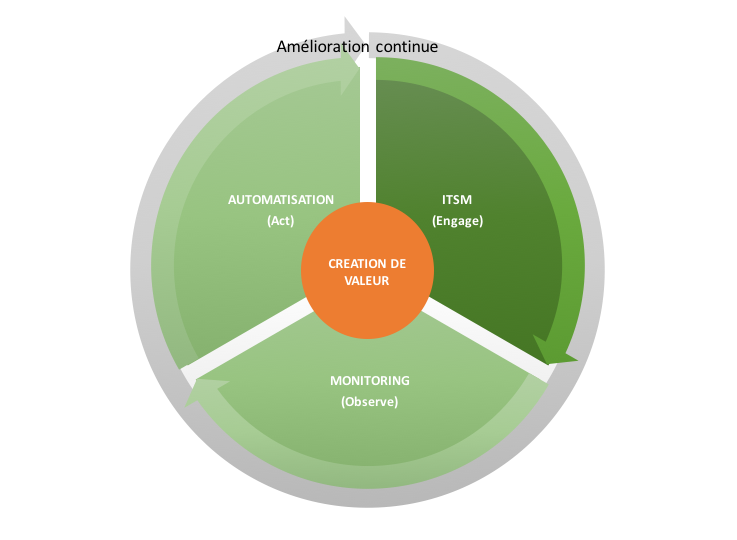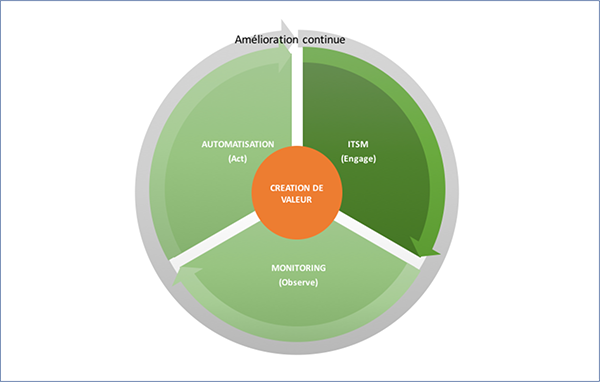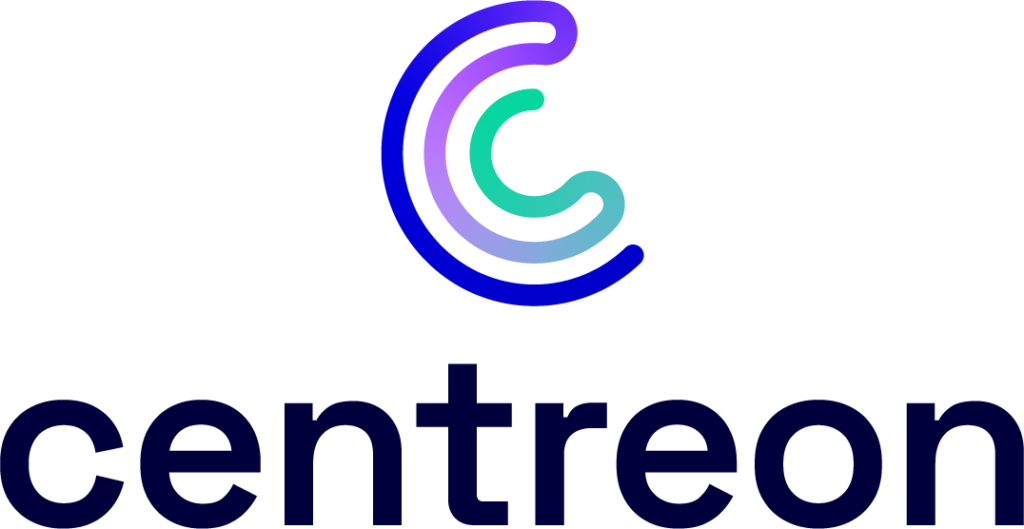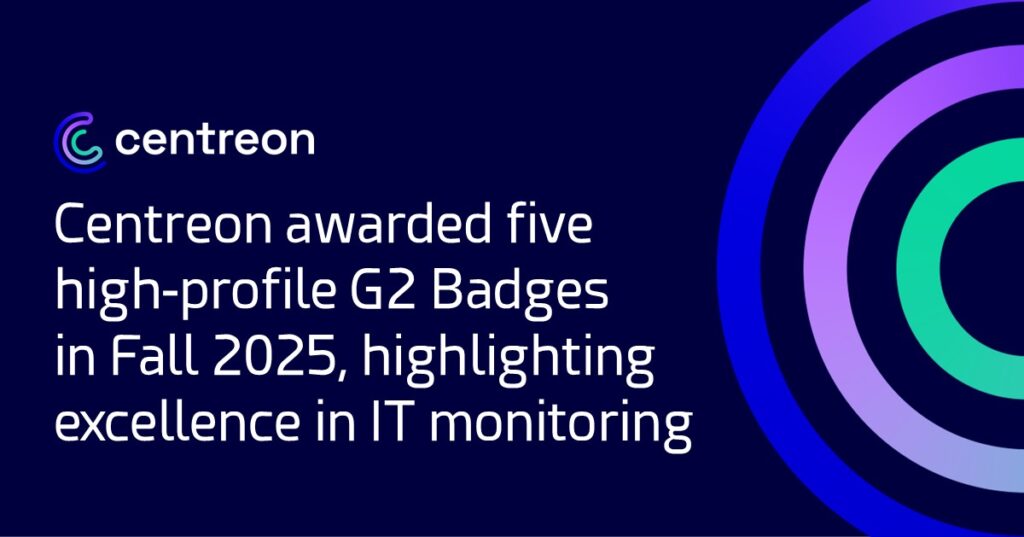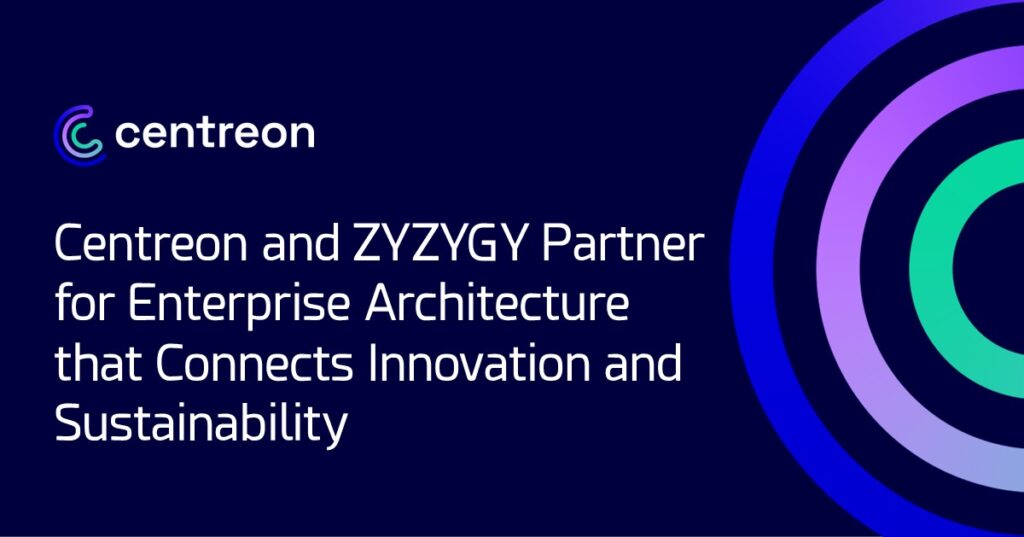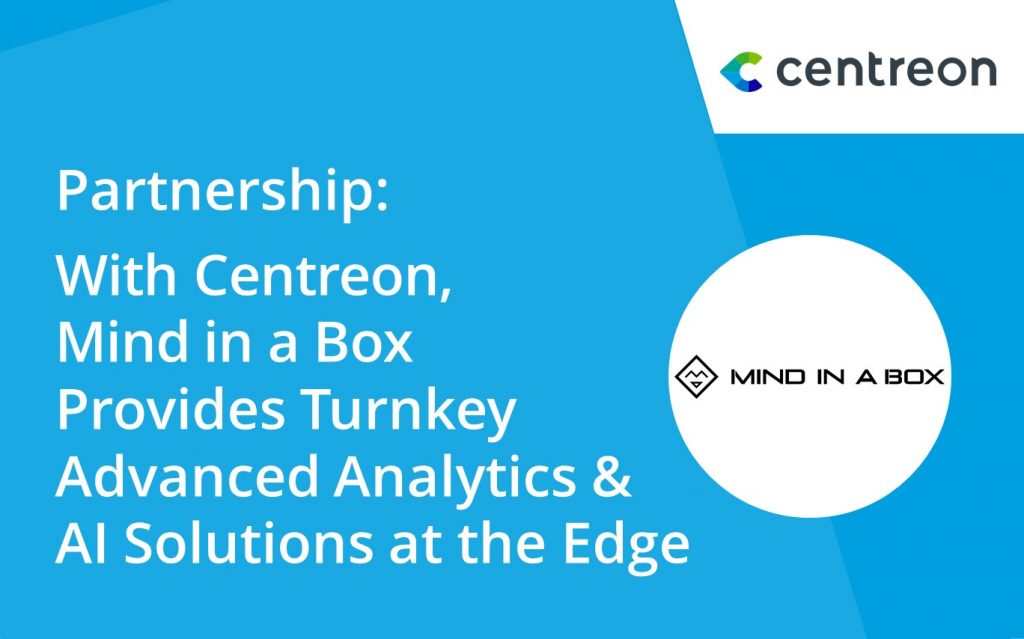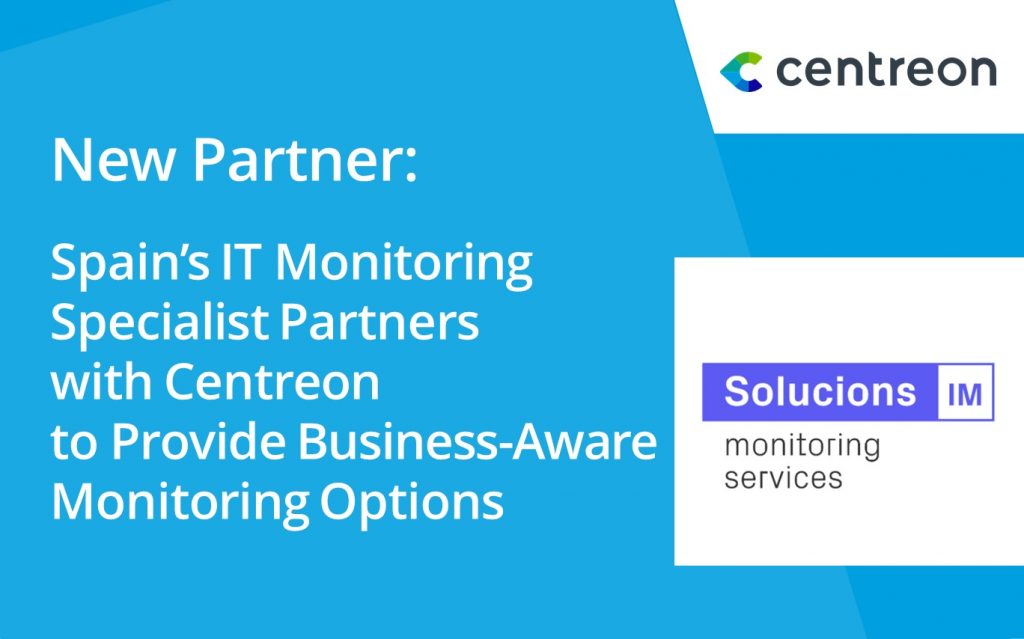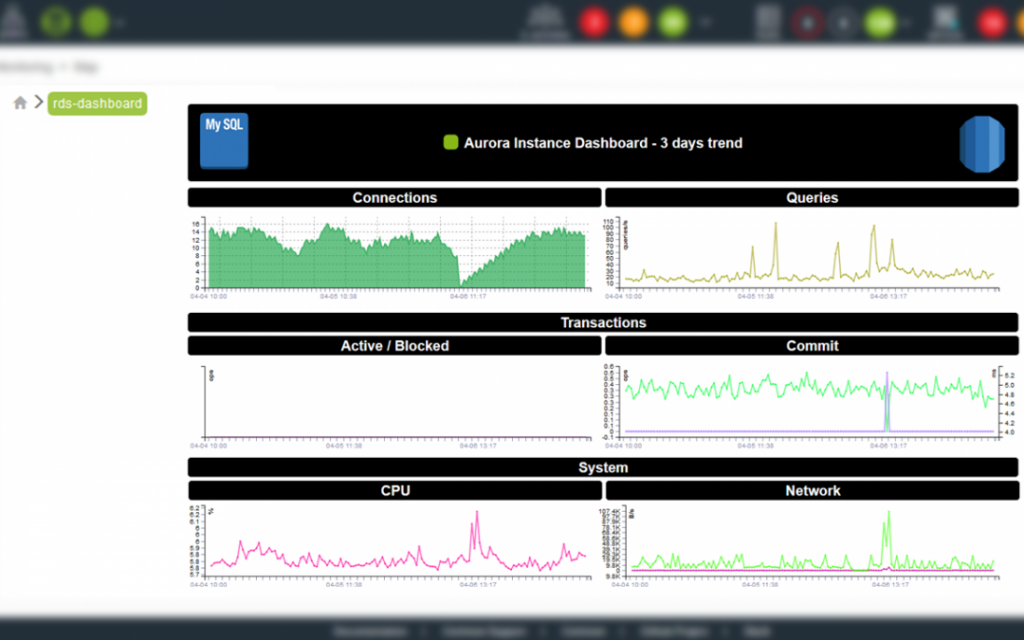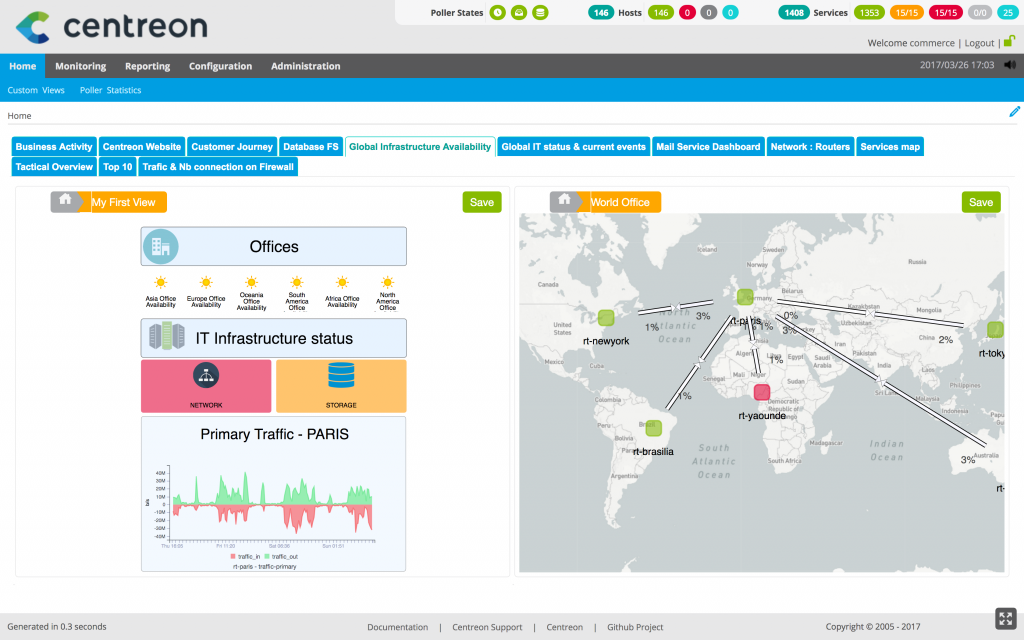DevOps
Back to glossaryDevOps: The Ultimate Definition and Guide
DevOps can refer to an approach, a practice, or tools aimed at enhancing an organization’s ability to accelerate the delivery of applications or services within a continuous and agile improvement framework. Through this practice, organizations can respond more rapidly to changing market expectations and improve their customer experience. DevOps can also describe a function within the enterprise and be incorporated into job titles. This guide offers a comprehensive overview of what DevOps is and what you should know about it.
Definition and history of the DevOps approach
DevOps is a cultural and technical movement that merges development and operations to deliver software quickly, reliably, and at scale. Its development began around 2008–2009, when agile methodologies revealed bottlenecks in traditional operations. The key DevOps principles include automation, collaboration, infrastructure as code, continuous integration and deployment (CI/CD), and feedback loops. These core principles foster iterative improvement, faster time-to-market, and higher quality.
The DevOps process
The DevOps lifecycle includes phases such as planning, coding, building, testing, releasing, deploying, operating, and monitoring. Each stage relies on version control, automated builds, CD pipelines, and continuous integration. These processes automate repetitive tasks, offer quick feedback, and enable continuous improvements towards DevOps success.
The DevOps lifecycle
The DevOps lifecycle is a continuous, iterative process that combines development and operations to streamline software delivery, enhance quality, and speed up deployment. It consists of a series of interconnected phases that automate and coordinate the work of cross-functional teams.
Here are the key stages of the DevOps lifecycle:
- Plan – Define requirements, set goals, and prioritize tasks using tools like Jira or Azure Boards.
- Develop – Write and manage code collaboratively using version control tools like Git.
- Build – Compile code and prepare build artifacts using automation tools such as Jenkins or Azure Pipelines.
- Test – Run automated tests to ensure code quality and catch bugs early.
- Release – Package and prepare code for deployment while managing approvals and compliance.
- Deploy – Launch updates into production through CI/CD pipelines and tools like Kubernetes or Ansible.
- Operate – Manage infrastructure and application performance, ensuring system health and uptime.
- Monitor – Use observability tools like Centreon or OpenTelemetry to collect metrics, logs, and traces for real-time feedback.
- Feedback & Improve – Analyze performance, user behavior, and incidents to continuously enhance future releases.
DevOps benefits
DevOps offers a wide range of benefits that improve how teams build, release, and operate software:
- Faster time to market – With continuous integration and delivery, new features and updates reach users more quickly.
- Improved collaboration – Developers, operations, and QA work together with shared goals and tools, reducing silos and handoffs.
- Higher quality releases – Automated testing and monitoring reduce bugs and production incidents.
- Greater reliability and uptime – Proactive monitoring and rapid recovery practices (like those tracked by MTTR) improve service stability.
- Scalability – Infrastructure as code and cloud automation allow systems to scale easily as demand grows.
- Stronger security – DevSecOps integrates security early in the pipeline, reducing vulnerabilities and compliance risks.
- Continuous feedback – Real-time monitoring and performance metrics help teams learn and improve with every release.
These benefits contribute directly to DevOps success metrics like lead time for changes, deployment frequency, and change failure rate—helping teams deliver better software, faster.
DevOps challenges and solutions
While DevOps brings significant benefits, adopting and scaling it across an organization isn’t without obstacles. Teams often face cultural, technical, and operational challenges that can slow progress or undermine results. Understanding these common pitfalls—and how to overcome them—is essential for long-term success. The table below outli
1. Cultural resistance → Foster a DevOps mindset
- Promote shared goals between dev, ops, and security.
- Start with small wins and internal advocates.
- Encourage blameless postmortems and continuous learning.
- Provide training and leadership support to guide the cultural shift.
2. Toolchain complexity → Standardize & automate
- Audit and consolidate your toolset around key needs.
- Use integrated platforms (e.g., GitLab, Azure DevOps) or internal developer platforms (IDPs).
- Automate configuration and workflows using infrastructure as code (IaC) and APIs.
3. Lack of standardization → Define clear processes
- Establish organization-wide DevOps playbooks and deployment standards.
- Use templates and reusable configurations for CI/CD pipelines and monitoring.
- Create cross-team documentation and promote consistency through automation.
4. Skills gaps → Invest in upskilling
- Offer ongoing training in CI/CD, cloud platforms, IaC, observability, and security.
- Encourage certification programs (e.g., AWS DevOps Engineer, Certified Kubernetes Administrator).
- Pair junior staff with experienced DevOps engineers for mentoring.
5. Security integration → Adopt DevSecOps
- Embed security tools (e.g., Snyk, Trivy, HashiCorp Vault) into your CI/CD pipeline.
- Shift security checks left—run them during development, not just after.
- Automate compliance scanning and create security-as-code policies.
6. Limited observability → Implement full-stack monitoring
- Use tools like Centreon, Prometheus, OpenTelemetry, and Grafana to gain real-time visibility.
- Monitor across infrastructure, applications, and user experience.
- Build dashboards and alerts tied to service-level objectives (SLOs).
7. Legacy systems → Gradual modernization
- Begin by automating what’s possible (e.g., monitoring, backups, test scripts).
- Use wrappers or proxies to bridge legacy systems with modern DevOps tools.
- Introduce microservices or containers around legacy components (a “strangler pattern” approach).
8. Scaling DevOps across teams → Establish platform engineering
- Create a platform team to build self-service tooling and templates.
- Provide consistent environments, guardrails, and centralized observability.
- Use internal documentation hubs and knowledge sharing across teams.
Let me know if you’d like this in table format or need a visual showing “challenge → solution” mappings for your page.
DevOps platforms
DevOps platforms are a comprehensive suite of integrated tools and technologies designed to streamline the software development lifecycle, from initial coding to deployment and ongoing monitoring
Common DevOps tools & technologies
Common DevOps tools support automation, collaboration, and monitoring across the software delivery lifecycle. Popular examples include:
- Version Control & Collaboration: Git, GitHub, GitLab, Bitbucket
- CI/CD Pipelines: Jenkins, GitLab CI, Azure DevOps, CircleCI, AWS CodePipeline
- Infrastructure as Code: Terraform, Ansible, AWS CloudFormation
- Containerization & Orchestration: Docker, Kubernetes, Helm
- Monitoring & Observability: Centreon, Prometheus, Grafana, OpenTelemetry, Datadog
- Testing & Quality: Selenium, JUnit, SonarQube
- Security (DevSecOps): Snyk, Trivy, HashiCorp Vault
These tools are often integrated into a unified DevOps platform to streamline workflows and improve reliability across development and operations.
See how a DevOps solutions specialist uses Centreon to extend their solutions.
DevOps phases with their common tools and technologies
| DevOps Phase | Purpose | Common Tools & Technologies |
| Plan | Define requirements, user stories, and goals | Jira, Azure Boards, Trello, Confluence |
| Develop (Code) | Write and manage application source code | Git, GitHub, GitLab, Bitbucket, Visual Studio Code |
| Build | Compile and build code into executable artifacts | Jenkins, Azure Pipelines, GitLab CI, CircleCI, Maven, Gradle |
| Test | Automate testing to ensure software quality | Selenium, JUnit, TestNG, Postman, SonarQube |
| Release | Prepare code and infrastructure for deployment | Azure DevOps, Harness, Spinnaker, Octopus Deploy |
| Deploy | Deliver code to production or staging environments | Kubernetes, Docker, Ansible, Helm, Terraform, AWS CodeDeploy |
| Operate | Maintain and manage infrastructure and application uptime | Centreon, Nagios, Datadog, Prometheus, Grafana, New Relic |
| Monitor | Observe system performance and user experience | OpenTelemetry, Centreon, ELK Stack (Elasticsearch, Logstash, Kibana), Splunk, Grafana |
| Secure (DevSecOps) | Embed security checks and compliance in the workflow | Snyk, Aqua Security, HashiCorp Vault, Trivy, Open Policy Agent |
DevOps infrastructure & DevOps cloud
DevOps infrastructure is defined by automated provisioning, configuration management, and scalable environments across private data centers or public clouds. The DevOps cloud relies on flexible, repeatable deployments, autoscaling, and fault tolerance.
DevOps with Azure & Microsoft DevOps
Azure DevOps encompasses services for repositories, pipelines, boards, test plans, and artifacts. Features like Azure DevOps pipelines and Azure DevOps boards aid collaboration between development and operations. Azure DevOps login unifies user access, and OpenTelemetry exporters capture traces and metrics hosted in Azure.
DevOps with AWS
AWS empowers DevOps teams with CodePipeline, CloudWatch, CloudFormation, and Elastic Kubernetes Service. OpenTelemetry instrumentation for AWS Lambda and EC2 supplies observability that smoothly integrates with monitoring tools, logs, and dashboards.
DevOps-as-a-Service (DaaS)
DevOps-as-a-service may offer managed CI/CD pipelines, container platforms, or telemetry platforms. Self-service issue tracking, self-service capabilities for tasks, and cloud services abstract complexity—allowing developers to build and deploy without waiting on operations.
See how this DaaS provider integrates Centreon into its services.
Organization, collaboration, and measurement
DevOps teams & developers
A multidisciplinary DevOps culture includes multiple developers, operations engineers, quality teams, and SREs. Metrics are tracked via dashboards, providing feedback across deployment and runtime performance.
Organization through DevSecOps
Organizations implement structure through DevSecOps, ensuring cohesive capabilities for tasks across development, security, and operations. DevOps workflows steer automated feedback, reducing manual handoff and improving CI/CD resilience.
DevOps best practices
Adopting DevOps best practices helps teams deliver software faster, more reliably, and with greater confidence. Start by implementing infrastructure as code to automate and standardize environment setup. Use automated testing to catch issues early, and build continuous integration and delivery pipelines to streamline code deployment. Automate repetitive tasks like builds and deployments to reduce human error. Incorporate observability tools and telemetry to monitor system health in real time. Finally, run regular performance tests, such as load testing and real-user monitoring, and use metrics like change failure rate, deployment frequency, and time to recovery to guide continuous improvement.
| Area | Recommended Practices |
| Infrastructure Management | Use Infrastructure as Code (IaC) tools to automate and standardize environment provisioning. |
| Testing | Implement automated unit, integration, and regression tests in the development pipeline. |
| Continuous Integration & Delivery | Adopt continuous integration and delivery pipelines for frequent and reliable releases. |
| Build & Deployment Automation | Automate build processes and deployment steps to minimize human error. |
| Observability & Monitoring | Use telemetry, monitoring tools, and logs to ensure visibility into system health. |
| Performance Testing | Conduct load testing and real-user monitoring to validate performance under pressure. |
| Performance Analysis | Track key metrics such as change failure rate, time to market, and software quality. |
How is DevOps success measured?
DevOps success is measured using a combination of technical, operational, and business metrics that reflect how effectively teams deliver software, maintain system reliability, and create value. These metrics are often aligned with goals like speed, quality, stability, and collaboration.
| Metric | What it Measures | Why it Matters |
| Deployment Frequency | How often code is deployed to production. | Indicates ability to deliver features and fixes quickly—a key DevOps goal. |
| Lead Time for Changes | Time taken for a code change to go from commit to production. | Reflects efficiency in development and release processes. |
| Change Failure Rate | Percentage of deployments that result in a failure. | Shows code quality and the resilience of CI/CD pipelines. |
| Mean Time to Recovery (MTTR) | Time taken to restore service after a failure. | Demonstrates effective incident response and system resilience. |
| Uptime and Availability | Percentage of time systems/services are available to users. | Essential for business continuity and reflects robust monitoring. |
| Customer Satisfaction | User or stakeholder feedback, often via NPS or surveys. | Indicates user satisfaction and perceived value of frequent releases. |
| Deployment Automation Coverage | Proportion of deployment steps that are automated. | Minimizes errors, speeds delivery, and ensures consistent deployments. |
| Security and Compliance Metrics | Number of vulnerabilities, time to patch, policy compliance. | Highlights maturity of security integration and risk management. |
| Team Collaboration and Culture | Cross-team interactions, ticket resolution times, developer satisfaction. | Fosters shared ownership, faster feedback, and better collaboration. |
These metrics are often tracked using observability tools, CI/CD analytics, ITSM platforms, and incident response systems. Tools like Centreon help visualize trends through dashboards that inform data-driven decisions to drive continuous improvement.
DevOps and observability
As systems grow increasingly distributed, the intersection of DevOps and observability becomes central to achieving stability and performance at scale. Observability empowers DevOps teams to detect issues earlier, trace root causes faster, and reduce mean time to resolution (MTTR)—all key indicators of a mature DevOps strategy.
Observability goes beyond traditional monitoring. While monitoring tools alert teams when something breaks, observability enables them to understand why it broke by collecting and correlating logs, metrics, and traces. This holistic insight is essential across the entire DevOps lifecycle—from development to deployment to post-release support.
This article discusses Devops and observability.
How Observability supports DevOps practices
Observability strengthens DevOps workflows in several key ways:
- Performance monitoring helps validate that automated builds and CD pipelines are functioning under expected conditions.
- Real-time metrics collected through platforms like OpenTelemetry improve feedback loops, critical for iterative improvement and faster time to market.
- End-to-end tracing supports performance testing with DevOps, especially in microservices environments.
- Anomaly detection enhances security practices and reduces the lower change failure rate.
- Visibility across hybrid platforms helps platform engineering teams manage complexity with self-service capabilities and streamlined collaboration.
Centreon plays a pivotal role in the DevOps observability ecosystem. Its support for OpenTelemetry protocols and flexible plugin architecture enables integration with modern DevOps tools and telemetry sources—from cloud-native applications to legacy infrastructure.
Whether you’re working in Microsoft DevOps, deploying services on AWS, or integrating with AI-enabled environments like Azure AI Foundry or Nvidia Enterprise AI Factory, observability tools like Centreon ensure your teams maintain full visibility over the production environment. Combined with DevOps automation, it provides the operational confidence needed to release faster and more reliably.
DevOps, Agile, and SRE: Understanding the differences
To fully understand the value and impact of DevOps, it’s helpful to explore the related concepts that complement and extend its principles.
How is the DevOps approach different from Agile methodology?
Agile software development is a methodology that emphasizes flexibility, collaboration, and iterative progress in building software. Rather than following a rigid, sequential process (like the traditional “waterfall” model), agile development breaks work into small, manageable increments called sprints or iterations, with continuous feedback and adaptation based on evolving requirements and user needs.
How Agile and DevOps Are Related
Agile and DevOps share a common goal: delivering high-quality software quickly and reliably. However, they focus on different parts of the software lifecycle:
- Agile is primarily concerned with the development side—how software is planned, created, and iterated on through collaboration and customer feedback.
- DevOps extends these agile principles to operations, ensuring that software can be built, tested, released, deployed, and monitored smoothly and continuously.
How Agile and DevOps complement each other:
- Agile accelerates development cycles; DevOps ensures those rapid changes are reliably delivered to production.
- Agile encourages frequent releases; DevOps enables the automation, monitoring, and infrastructure to support them.
- Agile focuses on collaboration between business and development; DevOps adds collaboration between development and operations.
In practice, many organizations implement Agile + DevOps together to form a continuous, end-to-end delivery pipeline—from user story to deployed application to monitored service—with constant feedback and improvement loops.
Agile vs. DevOps
| Aspect | Agile | DevOps |
| Primary Focus | Software development process | Full software delivery lifecycle (development + operations) |
| Goal | Deliver working software quickly and frequently | Deliver high-quality software continuously and reliably |
| Team Structure | Small, cross-functional development teams | Collaboration between development, operations, and sometimes QA |
| Practices | Sprints, stand-ups, user stories, retrospectives | CI/CD, infrastructure as code, monitoring, automation |
| Release Cycle | Frequent releases, usually every 1–4 weeks | Continuous integration, delivery, and deployment |
| Feedback Loops | Frequent customer and stakeholder feedback | Continuous operational feedback from monitoring and telemetry |
| Tooling Examples | Jira, Confluence, Git, Scrum/Kanban boards | Jenkins, GitLab CI, Kubernetes, Terraform, Centreon, OpenTelemetry |
| Automation Level | Moderate (mostly in testing and planning) | High (builds, testing, deployment, monitoring, infrastructure) |
| Cultural Emphasis | Flexibility, collaboration, and responsiveness to change | Shared responsibility, automation, and continuous improvement |
| End Goal | Satisfy customer needs quickly with iterative updates | Ensure stable, scalable, and rapid delivery from code to production |
Site reliability engineering (SRE) and DevOps
Site Reliability Engineering (SRE) is a discipline that applies software engineering principles to IT operations, with the goal of creating scalable and highly reliable software systems. Originating at Google, SRE introduces a systematic, engineering-driven approach to ensuring services are available, performant, and resilient.
How site reliability engineering relates to DevOps
SREs write code just like developers, but their focus is on building tools for deployment, monitoring, alerting, and automation to maintain operational health.
SRE and DevOps share similar goals—namely, improving the speed, stability, and efficiency of software delivery—but they come from slightly different angles:
| DevOps | SRE |
| Cultural movement focused on collaboration between dev and ops | Engineering discipline applying software practices to operations |
| Encourages automation, CI/CD, and shared responsibility | Implements automation and defines reliability goals using SLOs |
| Emphasizes pipelines, feedback loops, and monitoring | Focuses on availability, capacity, incident response, and root-cause analysis |
| General approach applicable across teams | Often a dedicated team with specific reliability mandates |
In essence, SRE can be seen as a concrete implementation of DevOps principles, with a stronger emphasis on engineering for reliability and using quantifiable goals to balance innovation and system stability.
The future of DevOps
As digital transformation accelerates and systems become more complex, the future of DevOps will be shaped by automation, intelligence, and an even deeper integration of development, operations, and security practices. While the core principles of DevOps—collaboration, automation, and continuous improvement—remain unchanged, the tools, roles, and expectations around DevOps are evolving rapidly.
AI-Driven DevOps (AIOps)
Artificial intelligence and machine learning are increasingly embedded into DevOps workflows. AIOps platforms analyze vast streams of telemetry data to detect anomalies, predict incidents, and automate remediation. Intelligent monitoring tools and AI agents—like those emerging from Azure AI Foundry and Nvidia Enterprise AI Factory—are helping teams move from reactive to proactive operations.
Centreon and AIOps Integration
Centreon integrates AIOps features to help DevOps and IT operations teams reduce alert fatigue, accelerate root-cause analysis, and make data-driven decisions. By leveraging anomaly detection algorithms and correlated event analysis, Centreon filters out noise and highlights the most critical incidents. These intelligent insights are enriched with contextual data from monitoring sources—helping teams identify performance trends, prevent downtime, and prioritize responses. Combined with flexible automation and powerful APIs, Centreon’s AIOps capabilities support smarter, faster, and more autonomous IT operations—making it an essential part of future-ready DevOps ecosystems.
Platform engineering & internal developer platforms
To address growing complexity, many organizations are embracing platform engineering. By building internal developer platforms (IDPs), DevOps teams abstract the underlying infrastructure and provide developers with self-service capabilities that streamline deployment, testing, and monitoring. This shift enhances productivity while maintaining governance and reliability.
DevSecOps and Shift-Left Security
Security will become a non-negotiable part of DevOps. DevSecOps practices embed security checks earlier in the CI/CD pipeline, supported by tools for static code analysis, policy enforcement, and container security. As compliance requirements tighten, security teams and developers will work even more closely to safeguard every layer of the application lifecycle.
Greater emphasis on observability
Observability will continue to evolve from a reactive tool to a strategic enabler of DevOps success. With the widespread adoption of OpenTelemetry and advancements in distributed tracing, teams will gain deeper visibility into performance, user experience, and application behavior—across microservices, edge environments, and hybrid clouds.
Hybrid and edge deployments
DevOps is expanding beyond traditional cloud environments to include edge computing, IoT, and hybrid deployments. This demands new tooling for low-latency updates, remote monitoring, and decentralized orchestration—all while maintaining security and reliability.
Evolving DevOps roles and skills
The role of the DevOps engineer is expanding to include responsibilities traditionally held by SREs, platform engineers, and security specialists. As the landscape changes, continuous learning and cross-functional skills will be essential. Certifications and hands-on experience with infrastructure as code, observability platforms, and cloud-native architectures will remain highly valued.
What are new features for DevOps?
New features and trends in DevOps continue to evolve as organizations demand faster, more secure, and more intelligent software delivery. Here are some of the most impactful new features and innovations shaping the future of DevOps:
1. AI and machine learning (AIOps)
- DevOps platforms now integrate AI to detect anomalies, predict failures, and automate incident response.
- Tools analyze logs, metrics, and traces to surface insights in real time.
- Centreon, for example, is incorporating AI-driven event correlation to reduce alert fatigue and accelerate troubleshooting.
2. GitOps
- A modern approach that uses Git repositories as the single source of truth for infrastructure and application deployment.
- Tools like ArgoCD and Flux automate synchronization between code and environments, enabling declarative infrastructure management.
3. DevSecOps enhancements
- Security is shifting further left into development cycles.
- New features include automated vulnerability scanning, secrets management, and policy-as-code tools integrated into CI/CD pipelines.
4. Internal developer platforms (IDPs)
- Platform engineering is giving rise to IDPs that provide developers with self-service capabilities for provisioning, deployment, and monitoring.
- These platforms abstract complexity while enforcing standards, accelerating developer productivity.
5. Observability-First DevOps
- With OpenTelemetry gaining adoption, observability is no longer an afterthought.
- New capabilities focus on distributed tracing, context-rich dashboards, and proactive alerting.
- Real-user monitoring (RUM) and synthetic testing are becoming standard in performance validation.
6. Low-Code and no-Code CI/CD
- DevOps tools are adding visual interfaces to define pipelines, workflows, and automation steps without requiring deep scripting knowledge—empowering more teams to participate.
7. Environment as a Service (EaaS)
- On-demand, ephemeral environments are becoming common, especially for testing and preview deployments.
- These environments integrate with Git workflows and are automatically created and destroyed as needed.
8. Enhanced multi-cloud and hybrid support
- New features allow teams to deploy and manage applications seamlessly across multiple cloud providers or hybrid infrastructures with unified monitoring and automation.
9. Policy-driven governance
- Advanced DevOps platforms now allow teams to enforce compliance, quality gates, and security rules through policy-as-code.
10. Event-driven automation
- Systems are increasingly adopting event-driven architectures, triggering automated workflows (e.g., rollbacks, scaling, security alerts) in response to real-time signals.
Takeaway
The future of DevOps is intelligent, automated, and collaborative. As organizations continue to modernize, DevOps will remain central to delivering resilient, scalable, and customer-focused digital experiences—empowered by data, driven by insight, and executed through shared responsibility.
- Let’s discuss how Centreon can enhance your DevOps initiatives and processes.
- You’re a DevOps specialist? Start your Centreon journey with a product tour.
- Try Centreon in your own environment: Try Centreon, Saas trial, or On-Prem trial with Centreon IT Edition 100 to monitor up to 100 devices for free, for as long as you like.
DevOps FAQ
What is DevOps?
DevOps is a collaborative cultural and technical practice uniting development and operations to deliver software faster and more reliably.
What does DevOps do?
DevOps automates builds, tests, deployments, and monitoring to accelerate delivery while improving quality and resilience.
What is a DevOps engineer?
A DevOps engineer automates infrastructure, builds CI/CD pipelines, manages telemetry and security, and fosters collaboration across teams.
What is DevOps in AWS and cloud?
In AWS and cloud contexts, DevOps uses services like AWS CodePipeline, CloudFormation, Azure DevOps, and OpenTelemetry to automate and observe distributed systems.
What is the goal of DevOps methodology?
The goal is rapid delivery of high-quality software, reduced failure rates, faster recovery, and improved collaboration.
Why is DevOps important?
DevOps enables continuous delivery, resilient operations, and scalable systems—critical for competitiveness and customer satisfaction.
What does a DevOps engineer do?
They design, deploy, and maintain CI/CD pipelines, infrastructure as code, monitoring systems, telemetry dashboards, performance and security testing.
How does DevOps work?
DevOps uses tools, automation, metrics, collaboration, and feedback to streamline the software delivery lifecycle.
When did DevOps start and become popular?
DevOps began around 2008–2009, inspired by agile development, and rose in popularity as cloud computing and microservices demanded tighter integration.
What is a DevOps platform?
DevOps platforms unify tools for version control, builds, artifact management, telemetry, and issue tracking.
What are common DevOps tools?
Common tools include Git, Jenkins, Kubernetes, Terraform, Prometheus, OpenTelemetry, and Centreon for monitoring.
Where is DevOps used?
DevOps is used across industries—from startups to mainstream media company Sony—all looking to accelerate delivery and improve system resilience.
How does Machine Learning and AI enhance DevOps?
Products like Azure AI Foundry, AI agents, and Nvidia Enterprise AI Factory can enhance DevOps workflows—enabling predictive autoscaling, anomaly detection, and intelligent telemetry analysis.
What is a DevOps approach?
A DevOps approach is a collaborative method that combines software development and IT operations to deliver applications faster and more reliably. It emphasizes automation, continuous integration and delivery (CI/CD), monitoring, and cross-team communication to streamline the entire software lifecycle.
What is DevOps capability?
DevOps capabilities include infrastructure as code, automated testing, continuous integration and deployment, monitoring and observability, self-service environments, and integrated security (DevSecOps). These capabilities help teams build, release, and manage software efficiently and at scale.
What is DevOps in AWS and cloud?
DevOps in AWS and cloud environments refers to using cloud-native tools and services to automate and manage the software delivery process—from development to deployment and operations. In AWS, DevOps practices are supported by services like CodePipeline (CI/CD automation), CloudFormation (infrastructure as code), CloudWatch (monitoring), and Lambda (serverless computing). Cloud-based DevOps enables scalability, flexibility, and faster release cycles by provisioning infrastructure on demand, integrating telemetry, and supporting continuous delivery workflows across distributed systems.
How does DevOps work?
DevOps works by integrating development and operations teams through shared tools, processes, and responsibilities. It automates the software delivery lifecycle—from coding and building to testing, deploying, and monitoring—using practices like continuous integration, continuous delivery (CI/CD), and infrastructure as code. DevOps emphasizes collaboration, rapid feedback loops, and real-time observability to ensure software is delivered faster, with fewer errors, and can scale reliably in production environments.
What is Azure DevOps login?
Azure DevOps login refers to the process of signing into the Azure DevOps platform, Microsoft’s cloud-based suite of development and DevOps tools. By logging in with a Microsoft account or organizational credentials, users gain access to features such as Azure Repos, Azure Pipelines, Azure Boards, Test Plans, and Artifacts. The login enables secure access control, user management, and collaboration across DevOps teams—allowing them to track work, manage code, run CI/CD pipelines, and monitor deployments in one unified environment.
Pages linked on this
Ready to see how Centreon can transform your business?
Keep informed on our latest news



